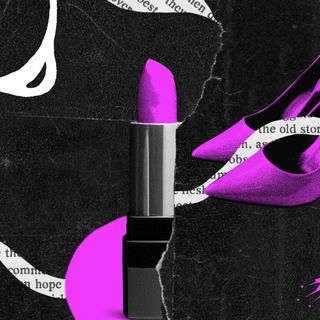
Why Bollywood’s Classic ‘Chiffon Sarees in Snow’ Trope Isn’t Cutting it Anymore
‘Tum Kya Mile’ stands as a relic of an era gone by, obstructing the path of the new cinematic age whose dawn we so desperately seek.

Bollywood had, until recently, been battling censure for its continued reliance on narratives rooted in nationalism and chauvinistic machismo; cases in point: Pathaan (2023), Brahmastra (2022), and Sooryavanshi (2021), among others. It’s almost as if love had receded from our screens to make space for hypermasculinity and religious fervor in this magnum opus era of Indian cinema, endangering the escapist fantasy that Bollywood offered Indians through its trademark romances. But last week, with the announcement of Karan Johar’s Rocky Aur Rani Kii Prem Kahani, audiences were once again promised the escapist fantasy of love they had been missing.
“Media has always been a form of escape for many — to get away from reality and its burdens,” psychotherapist Anushree Aurangabadkar, had told The Swaddle, explaining how the desire to indulge in romantic fantasies — as a means of escapism or otherwise — is an innately human tendency. “This need comes from multiple things: procreation, safety, belongingness… Humans love love.” This is especially true of India, a country struggling with unhappiness, where romances served as a means to soothe and heal people across generations — precisely what made Shah Rukh Khan (the “king of romance“) a reigning superstar in the country.
An indispensable feature of Bollywood’s romances has been its dazzling song sequences involving larger-than-life spectacles. Among the many iconic motifs that the industry employs to bring love alive on screen is the classic imagery of the leading women wearing chiffon sarees as they frolic amid snow-capped mountains with their male love interest, typically clothed in weather-appropriate gear. Rocky Aur Rani Kii Prem Kahani, too, attempted to evoke our collective nostalgia by freezing Alia Bhatt, its female lead, in Manish Malhotra’s chiffon sarees. Shot in heavily snowed-in valleys, Tum Kya Mile — a song that filmmaker Johar and music composer, Pritam, hope will be “the song for ages” — attempts to “unabashedly pay homage to my guru, Yash Chopra,” in Johar’s own words.
“The thinking evolved mind would say ‘you can’t match it or even dare to emulate it,’ but the fanboy and the ardent lover of snow, chiffons, the stunning locations of Kashmir, and sheer romance, got the better of me,” he added. The question, however, is whether the once-magical formula of chiffon-sarees-in-snow is still as enchanting in the contemporary era we live in.
Related on The Swaddle:
Spy, Cop, and ‘Astra’ Universes Taking Over Cinema, Points to the Marvel‑ification of Bollywood
The saree-and-snow spectacle was once inaccessible to the vast majority of audiences gearing up to watch their favorite heroes and heroines revel in the romance they too desired, in locales they couldn’t possibly imagine setting foot in. But now, as a result of India’s economic facelift over the last decade or so, our social media feeds are inundated with photos of friends, colleagues, and distant acquaintances gallivanting across Europe — at times, even sightseeing in the same snow-capped mountains that had once seemed like an inaccessible dream.
Not only that, but during the time of Yash Chopra’s reign over Bollywood, stardom, too, was shrouded in an air of mystique and unattainability — turning the chiffon-in-snow spectacle into a fantasy far removed from the mundane realities of everyday life. But now, with even the private lives of celebrities becoming accessible in the age of social media, the once-inaccessible aura surrounding Bollywood stars themselves and their cinematic escapades has lost its charm and relevance.
And moreover, what if we no longer need escapism? The other factor arguably driving this marked shift was a growing preference for honest representations of human lives on screen; audiences, now, seek relatability and authenticity in their entertainment choices. For middle-class Indians, the “suave, educated, English-speaking” NRI ceases to be interesting beyond a point because they aren’t relatable, Itisha Nagar, an assistant professor of psychology at Delhi University, had told The Swaddle.
And so, the chiffon-sarees-in-snow trope no longer provides the same degree of escapism, and it isn’t relatable to the masses either — leaving viewers yearning for a more engaging cinematic experience. Tum Kya Mile, then, is a fantasy that offers neither reality nor the kind of inaccessibility that could translate into escapism. There’s no denying the wistful longing that pairing snow-capped mountains with chiffon sarees elicits for the bygone era of cinematic grandeur and romance; after all, it’s a symbol etched into our collective consciousness. But therein lies the problem, too: in its desperate bid to hold on to an idea of romance that predates the birth of many millennials, Bollywood is denying its young generation of fans their own, unique version of a grand romance.
Related on The Swaddle:
‘The Romantics’ Shows the Thinning Line Between Documentaries and PR
To resonate with audiences of today, Bollywood might need to reimagine its visual language, and embrace narratives that reflect the changing dynamics of society; merely repurposing tropes of the yore isn’t cutting it anymore. By clinging to the past, then, the industry not only risks limiting its creative potential, but also fails to connect with a new generation of viewers who seek narratives reflecting their own aspirations.
Besides, the imagery of a thin, fair-complexioned heroine basking in the warmth of love while sexily donning a chiffon saree in freezing temperatures points to the lack of diversity and representation within the industry, and highlights how women have been forced to adhere to a narrow standard of beauty so they can continue to be objectified decade after decade.
In the post-pandemic world, where the demand for inclusivity is growing louder than ever, Tum Kya Mile simply stands as a relic of an era gone by, obstructing the path of the new cinematic age whose dawn we so desperately seek.
By breaking away from the constraints of traditional tropes, Bollywood has the opportunity to explore narratives that embrace the rich tapestry of India’s cultural and social fabric — providing a platform for underrepresented voices, fostering a more inclusive cinematic landscape, and forging a more diverse, more resonant form of storytelling that reflects the ever-evolving society we inhabit today. But that dream seems as far-flung now as the romancing in sub-zero temperatures wearing colorful chiffon sarees once did.
Devrupa Rakshit is an Associate Editor at The Swaddle. She is a lawyer by education, a poet by accident, a painter by shaukh, and autistic by birth. You can find her on Instagram @devruparakshit.
Related


Woe Is Me! “My Long‑Distance Boyfriend Sucks at Sexting. Should We Break Up?”
